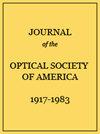Tellurium spectrometer for 1S0-1P1 transitions in strontium and other alkaline-earth atoms.
Journal of the Optical Society of America and Review of Scientific Instruments
Pub Date : 2022-05-01
DOI:10.1063/5.0084122
引用次数: 0
Abstract
We measure the spectrum of tellurium-130 in the vicinity of the 461 nm S01-P11 cycling transition in neutral strontium, a popular element for atomic clocks, quantum information, and quantum-degenerate gases. The lack of hyperfine structure in tellurium results in a spectral density of transitions nearly 50 times lower than that available in iodine, making use of tellurium as a laser-frequency reference challenging. By frequency-offset locking two lasers, we generate the large frequency shifts required to span the difference between a tellurium line and the S01-P11 resonance in strontium or other alkaline-earth atoms. The resulting laser architecture is long-term frequency stable, widely tunable, and optimizes the available laser power. The versatility of the system is demonstrated by using it to quickly switch between any strontium isotope in a magneto-optical trap and by adapting it to spectroscopy on a thermal beam with a different alkaline-earth atom.用于锶和其他碱土原子中s1 - 1p1跃迁的碲谱仪。
我们在中性锶中测量了碲-130在461 nm S01-P11循环跃迁附近的光谱,中性锶是原子钟、量子信息和量子简并气体的常用元素。碲缺乏超精细结构,导致其跃迁光谱密度比碘低近50倍,这使得利用碲作为激光频率参考具有挑战性。通过频率偏置锁定两个激光器,我们产生了跨越碲线和锶或其他碱土原子的S01-P11共振之间差异所需的大频率位移。由此产生的激光结构是长期的频率稳定,广泛可调,并优化了可用的激光功率。通过使用该系统在磁光阱中的任何锶同位素之间快速切换,以及通过使其适应具有不同碱土原子的热光束上的光谱,证明了该系统的多功能性。
本文章由计算机程序翻译,如有差异,请以英文原文为准。
求助全文
约1分钟内获得全文
求助全文

 求助内容:
求助内容: 应助结果提醒方式:
应助结果提醒方式:


